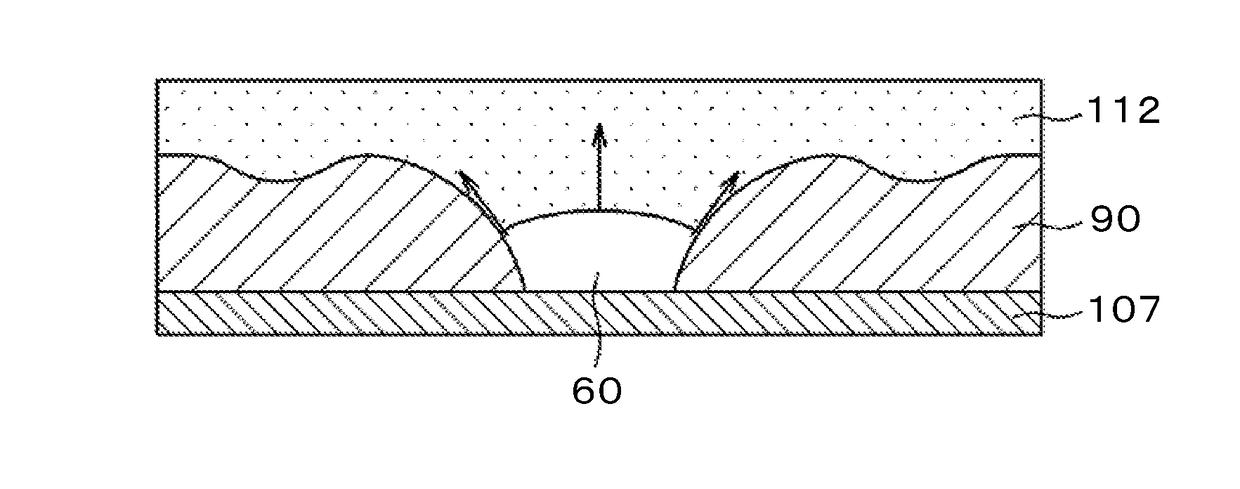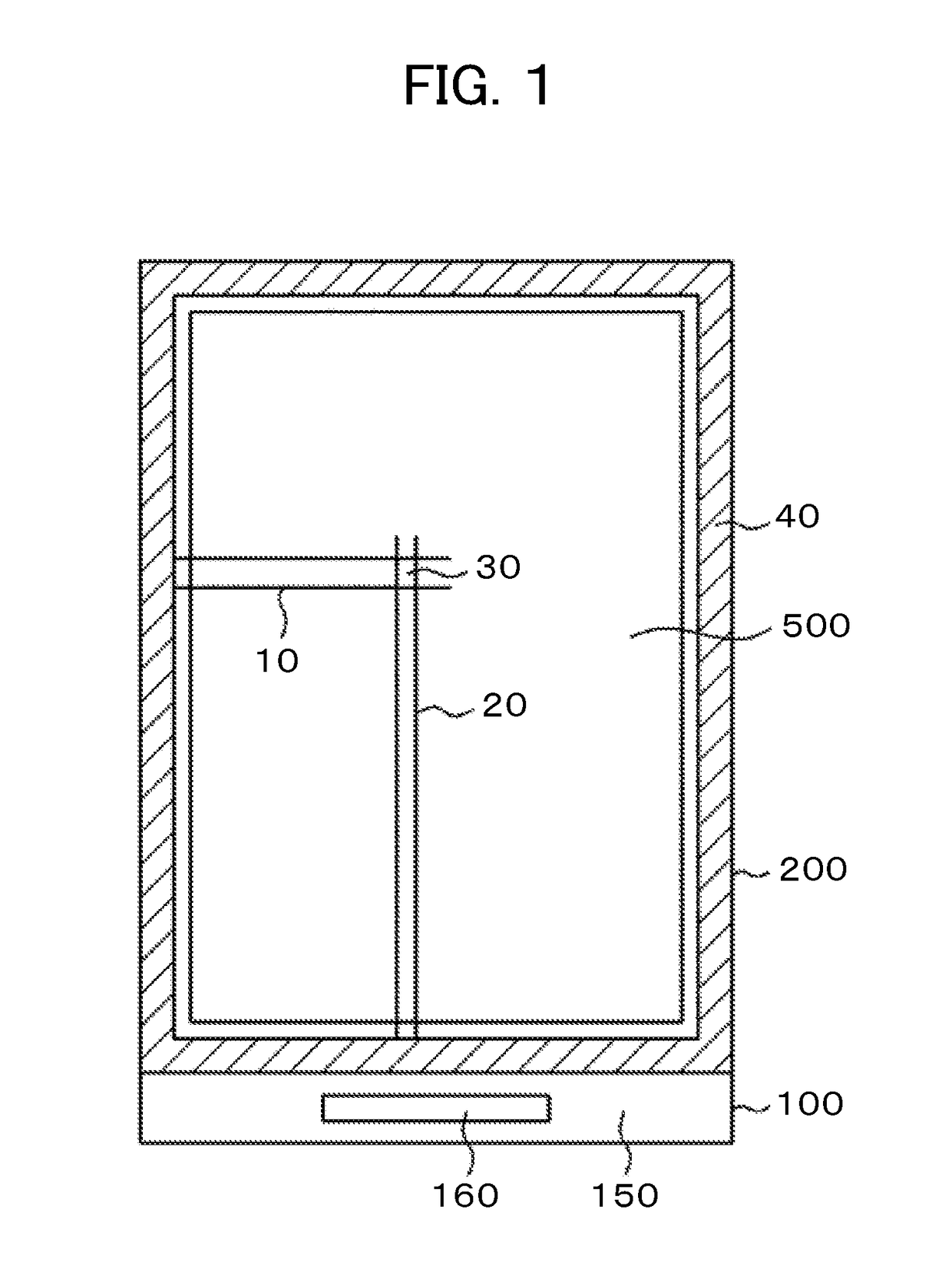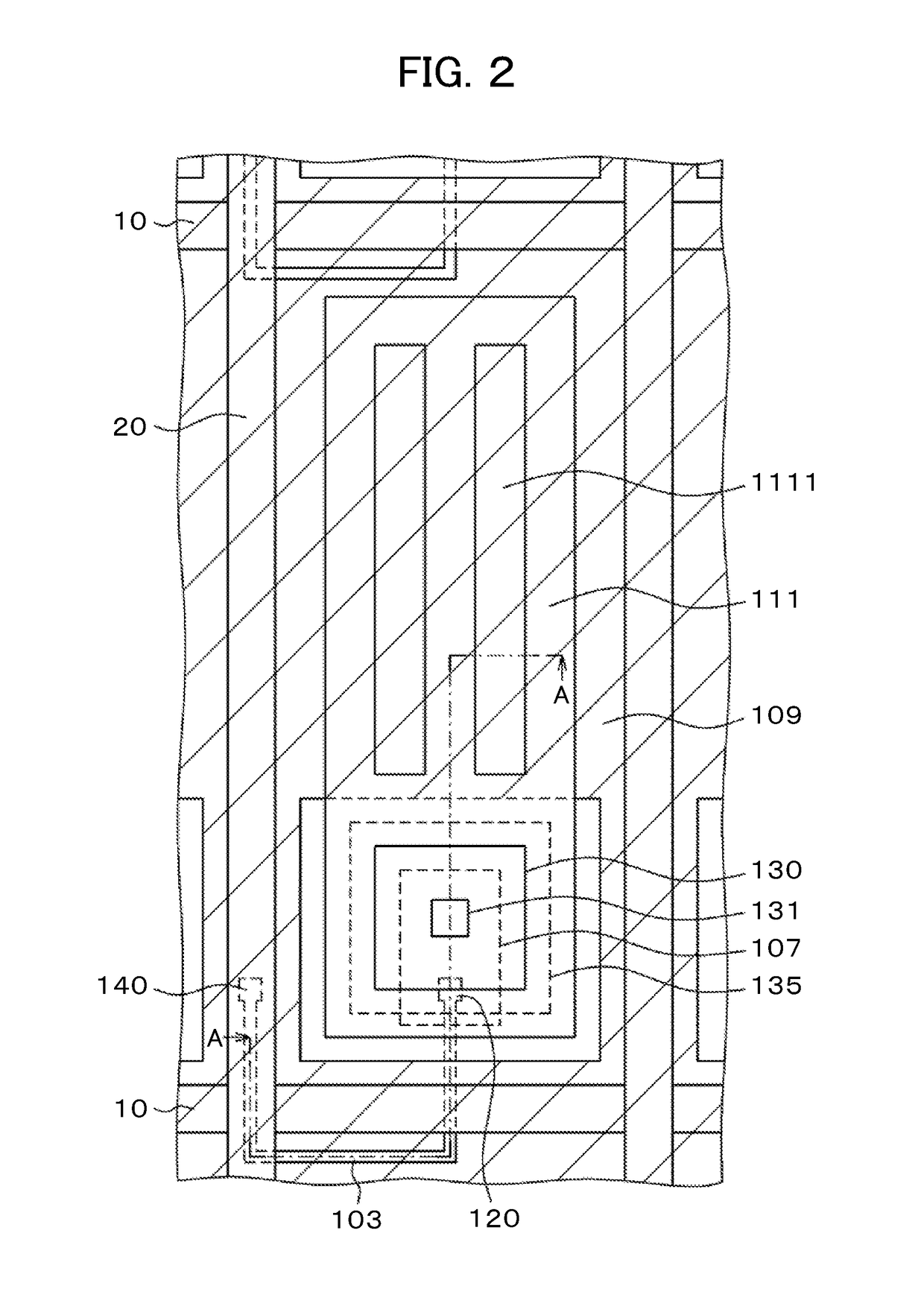Liquid crystal display device
a liquid crystal display and display device technology, applied in non-linear optics, instruments, optics, etc., can solve the problems of easy to see display unevenness, light leakage, and display unevenness, and achieve the effect of enhancing the screen resolution of liquid crystal display devices, especially small ones, and reducing the distance between the through-hole in the pixel and the through-hole in the adjacent pixel
- Summary
- Abstract
- Description
- Claims
- Application Information
AI Technical Summary
Benefits of technology
Problems solved by technology
Method used
Image
Examples
embodiment 1
[0034]FIG. 1 is a plan view of a liquid crystal display device to which the invention is applied. In FIG. 1, a TFT substrate 100 and a counter substrate 200 are glued by a sealing material 40, and a liquid crystal layer is sandwiched between the TFT substrate 100 and the counter substrate 200. The TFT substrate 100 is formed larger than the counter substrate 200, and the portion of the TFT substrate 100 that does not overlap any other layer serves as a terminal section 150. Formed at the terminal section 150 are an IC driver 160 for driving a liquid crystal display panel and terminals to which to connect a flexible printed circuit board for supplying to the liquid crystal display panel electric power, video signals, scan signals, and so on.
[0035]As illustrated in FIG. 1, within a display area 500, scan lines 10 extend in a first direction and are arranged in a second direction. Also, video signal lines 20 extend in the second direction and are arranged in the first direction. The ar...
embodiment 2
[0068]FIG. 9 is a plan view of the nearby area of the through-hole 130 according to Embodiment 2 of the invention. In terms of shape, FIG. 9 is the same as FIG. 7 that illustrates Embodiment 1. However, FIG. 9 differs from FIG. 7 in that, in the former, the connective electrode formed in the through-hole 130 is not formed of ITO but metal. This metal is hereinafter referred to as the connective metal 136. Since the common electrode 109 is formed across the entire screen except through-holes 130 and their nearby areas, increasing the thickness of the common electrode 109 will decrease the light transmittance, which may constitute a disadvantage in terms of screen brightness.
[0069]Therefore, it is desired that the common electrode 109 be formed thin. However, reducing the thickness of the common electrode 109 will, in turn, increase its electrical resistance when it is formed of ITO. To avoid this, metal wires are often formed on the common electrode 109. Such metal wires can be forme...
embodiment 3
[0076]FIG. 11 is a cross section of the nearby area of the through-hole 130 according to Embodiment 3. A plan view of FIG. 11 is the same as that of FIG. 9. As illustrated in FIG. 11, the connective metal 136 is formed in and around the through-hole 130. The thickness of the connective metal 136 is, for example, about 150 nm, as is similar to Embodiment 2.
[0077]FIG. 11 differs from FIG. 10 in that, in the former, the thickness of the common electrode 109 is also increased as in Embodiment 1. Thus, the resultant recessed portion is allowed to have inner and outer steps of substantially the same height in a radial direction with respect to the center of the through-hole 130.
[0078]FIG. 11 also differs from FIG. 8 that illustrates Embodiment 1 in that, in the former, the distance w between the connective metal 136 and the common electrode 109 can be made smaller than the counterpart of Embodiment 1. The reason is the same as in Embodiment 2. Thus, the width of the black matrix can be ma...
PUM
| Property | Measurement | Unit |
|---|---|---|
| thickness | aaaaa | aaaaa |
| height | aaaaa | aaaaa |
| thickness | aaaaa | aaaaa |
Abstract
Description
Claims
Application Information
 Login to View More
Login to View More - R&D
- Intellectual Property
- Life Sciences
- Materials
- Tech Scout
- Unparalleled Data Quality
- Higher Quality Content
- 60% Fewer Hallucinations
Browse by: Latest US Patents, China's latest patents, Technical Efficacy Thesaurus, Application Domain, Technology Topic, Popular Technical Reports.
© 2025 PatSnap. All rights reserved.Legal|Privacy policy|Modern Slavery Act Transparency Statement|Sitemap|About US| Contact US: help@patsnap.com



